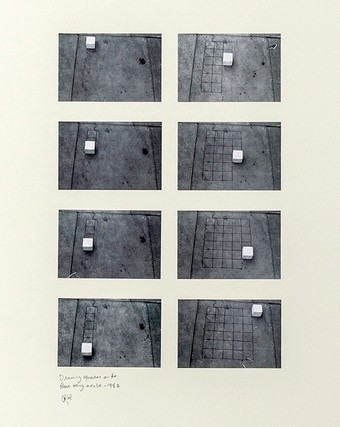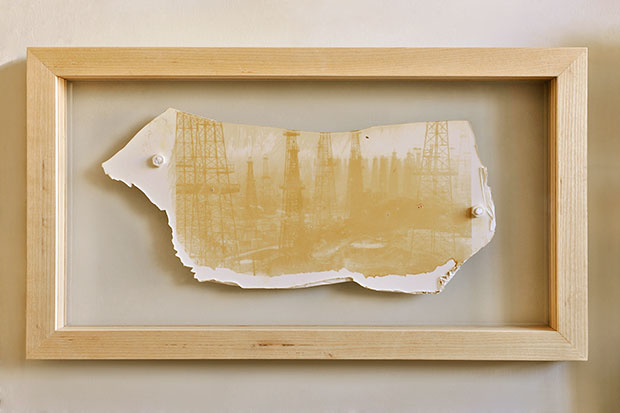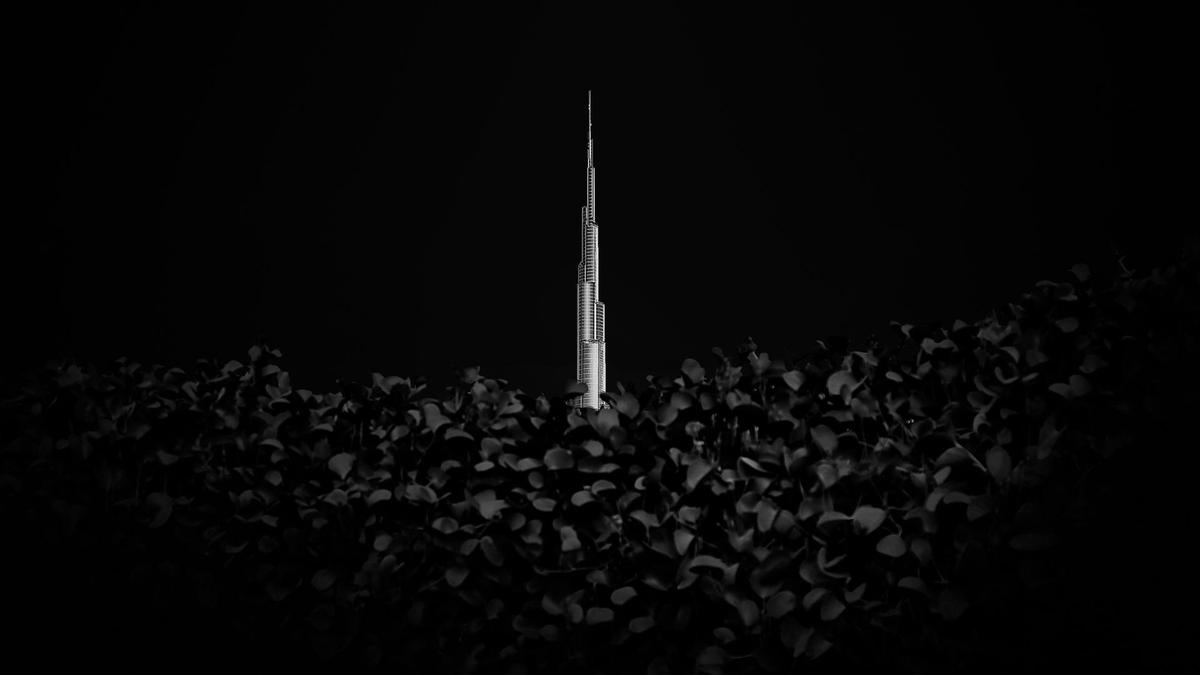It’s the kind of painting that can infuriate the more casual art follower. Walk into the Whitechapel Gallery in London and it’s there, almost confrontational in its simplicity. A solid black shape sits on a white rectangular background. That’s it. And yet Kazimir Malevich’s famous piece, now almost 100 years old, is credited with not just being a revolutionary symbol, but a dawn of a new age, the beginning of abstract art and, well, the first painting that isn’t “of’” anything. It’s one of the most important paintings in the world.
We’re at the Whitechapel Gallery because just around the corner from Malevich’s work is an offering from the pioneering UAE artist Hassan Sharif. He’s in exalted company – to get to his piece, Drawing Squares on the Floor Using a Cube, you have to walk past Piet Mondrian’s famous grid-styleComposition With Yellow, Blue and Red, and work from the fascinating Indian artist Nasreen Mohamedi, who melded western abstract ideas with Islamic patterns.
So to be included in this huge, and genuinely global survey of abstract art, entitled Adventures of the Black Square: Abstract Art and Society 1915-2015, feels like a big moment for Sharif, and the notion of UAE art itself.
“I feel really happy that I was chosen, and yes, being included does feel very important,” he agrees. “I remember when I was in England in the beginning of the 1980s – I used to go to Whitechapel all the time. It was a gallery that was very important in my development. So to be exhibited there in particular feels good.”
In fact, it was during the early 1980s that Sharif actually made Drawing Squares on the Floor Using a Cube. It’s exactly what the title suggests – a series of photographs in which Sharif has drawn around a cube, gradually constructing a grid that appears to have no obvious end. Taken in the context of what Sharif was thinking about at the time, it could be an homage to Malevich – which he admits it is, in part – or a wider comment on the infinite possibilities of art, or even his homeland as it began to grow.
That’s the thing with abstract art: there are many possibilities – or there are none. It might just be art. And Sharif understands how that’s a barrier some can’t overcome.
“Though for me, abstract art has everything to do with society,” he says. “Malevich was creating his work at an incredible time in early 20th-century Russia. But the problem is, abstract art is not direct. It takes a lot of education to understand it, which is maybe why people don’t always appreciate it.”
When he was painting, Malevich wanted to break up the bourgeois art scene, which he believed was not much more than “a necktie on the starched shirt of a gentleman and a pink corset holding in the stomach of a fat lady”. And Sharif has actually translated Malevich’s Suprematist manifesto into Arabic – “I understand the primacy of pure feeling in creative art” – in an attempt to encourage a younger generation of UAE artists to gain inspiration from the past. In a sense, his journey to Whitechapel mirrors the journey the entire UAE contemporary art scene has been on, with Sharif as the figurehead.
“I’m happy I’ve been recognised, and taken part in the Venice Biennale, for example,” says the artist. “But as artists in the UAE we are all one family and we have to support each other. We are new in terms of art, and we are in a way making history. There are now important abstract artists living here, and while the scene might be small, we are forcing ourselves to do better.”
Sharif points to the imminent arrival of Louvre Abu Dhabi and the Guggenheim Abu Dhabi – in which there will be more than 60 of his works – as proof that his world is changing. “I would never have thought back in 1982 these museums would exist in the UAE, but we now need them,” he says.
“Life excites me,” he continues. “Every day I’m stimulated. And I think my work is more than making art. For me, whatever I do, even when I walk to the bathroom, it’s interesting. So if you ask which work of mine I like the most, then I can’t answer that. Whatever I’ve done and whatever I’m going to do is equally important. I live art.”


